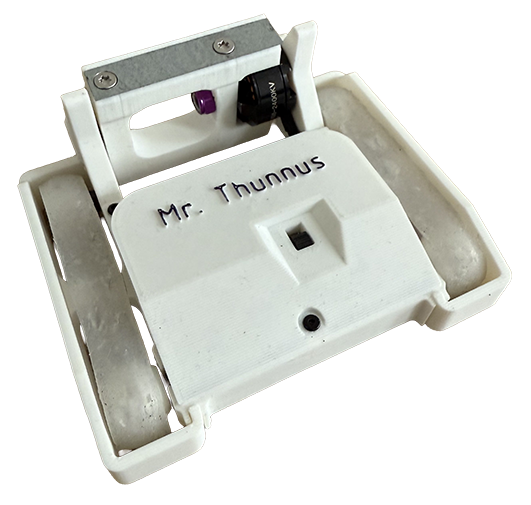Spinner
The spinner is one of the most aggressive and destructive types of combat robots. Its main weapon is a rapidly rotating disc, drum, or entire body section that uses kinetic energy to crush its opponent. The spinner is not a robot that overpowers or outsmarts its opponent—its goal is to smash its opponent to pieces.
Spinner robots are divided into two main branches:
- Horizontal spinners
- Vertical spinners
Each of these branches has several subtypes with unique characteristics.

1. Horizontal spinners
The weapon rotates parallel to the floor and strikes opponents from the side. Thanks to their large diameter and massive kinetic energy, horizontals are among the most destructive robots in the arena.
Horizontal spinners are divided into three main subtypes:
a) Classic horizontal spinner
- Description: A rotating disc, rod, or arm attached to the front of the robot.
- Advantages:
- Enormous destructive power
- Long-range attack
- Ideal against armored opponents
- Disadvantages:
- Strong recoil
- Risk of tipping over
- Representatives: Tombstone, Barbarous
b) Full Body Spinner (FBS)
- Description: The entire body of the robot serves as a rotating weapon. The core of the robot is protected inside, while the outer shell rotates.
- Advantages:
- 360° attack without the need to aim
- Difficult to attack
- Disadvantages:
- Extremely difficult to balance
- Lower maneuverability
- Representatives: Captain Shrederator, Megabyte
c) Melty Brain Spinner (Gyro walker)
- Description: A special subtype of the full body spinner. The robot can move and target opponents while rotating at full speed thanks to a clever algorithm (melty brain).
- Advantages:
- Combines the destructiveness of FBS with mobility
- Unpredictable attacks
- Disadvantages:
- Extremely demanding construction and software
- Very rare
- Representatives: Experimental robots from smaller competitions (e.g., CycloneBot)
2. Vertical spinners
The weapon rotates perpendicular to the floor and hits opponents from above. Not only does it destroy, but it often throws opponents into the air.
Vertical spinners have three basic variants:
a) Disc spinner
- Description: A flat disc that concentrates energy into a precise strike.
- Advantages: Even energy distribution, ability to pierce armor.
- Disadvantages: Less lifting effect.
- Examples: Bite Force
b) Drum spinner
- Description: A cylinder (hollow or solid) with teeth or spikes.
- Advantages: Strong lifting effect, ability to knock opponents over.
- Disadvantages: Shorter range than a disc.
- Representatives: Minotaur
c) Eggbeater spinner
- Description: A compact, angular rotor resembling an eggbeater. It is lightweight and spins at extremely high speeds.
- Advantages: Brutal effectiveness when hitting, high rotation speed.
- Disadvantages: Difficult to balance, prone to vibration.
- Representatives: Common type for smaller robots in the Beetleweight or Featherweight categories.
Advantages and disadvantages of spinners in general
Advantages:
- Greatest potential for heavy damage
- Attractive to spectators (sparks, flying pieces of armor)
- Possibility of winning a match with a single strike
Disadvantages:
- Require precise balancing
- High risk of self-damage
- High energy consumption
Conclusion
Spinners are legends of robotic battles.
Horizontal types (classic, full body, and melt brain) represent raw destructiveness and extreme design challenges. Vertical spinners add control and a lifting effect with disc, drum, and eggbeater variants.
Regardless of their form, spinners have one thing in common—they can decide a match with a single strike and are rightly considered the most destructive archetype of combat robots.
Turn your ideas into reality with our components. You will find everything you need to build your champion in our e-shop.

